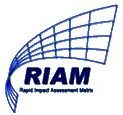Features
RIAM organises an Impact Assessment and provides a number of significant advantages over traditional systems of assessment and reporting.
Provides a transparent record of the RIAM judgements and analysis results.All the steps in completing the analysis are recorded and fully defined. So the process of analysis itself can be and analysed and evaluated.
Provides a clear, permanent record not dependent on description or written text.The matrix provides a permanent record that is not dependent on description or written text to be understood. This also allows the assessment to be up-dated and checked over time as new information becomes available
Allows rapid comparison of development options and “what if” conditions.Scenarios and alternative options for development can be rapidly and comparatively assessed to select the best solution.
Provides an evalution platform for all sectors allowing a full and balanced picture of potential impacts. The system is universal and can be used in any development sector or mix of sectors and disciplines. RIAM allows for the different aspects of the natural and human environment to be placed on a common foundation, thus allowing the ‘trade-offs’ in environment and development to be seen.
Organises the analysis process of an assessment, allowing it to be easily understood, replicated and updated.The system requires discipline and adherence to a step-wise process of analysis and recording. This improves the implementation of an assessment, the quality of the analysis, and the evaluation and replication of the assessment.
The RIAM analysis system is easy and fast to use.
The matrix has been developed into software that improves the speed of the process and provides a rapid system of recording the judgements made.

RIAM provides for a holistic assessment of both qualitative and quantitative data, across all sectors making it a valuable tool for all levels of decision making.
RIAM can be used for Strategic Environmental Assessment (SEA), Regional Environmental & Social Assessment (RESA), Initial Environmental Evaluation (IEE), and Environmental Impact Assessment (EIA).

RIAM provides a permanent baseline for any impact assessment.
If further detail is required, say by weighting specific components, this can be done after the original RIAM baseline has been recorded. This then becomes an example of “what if” scenario testing by RIAM.

RIAM is so useful at the strategic level and its holistic nature, that it has been suggested that strategic assessments using RIAM should be considered as Combined Environmental Economic and Social Assessments (CEESA).

Environmental Scores in RIAM are translated into Range Values to ensure that there is consistency in the final result of the assessment.
ES values cannot be directly used or added together as a single value could represent a number of different conditions. The ES scores are converted into RV values for this reason and to further ensure accuracy it is suggested that the alphabetic RV values are used.
